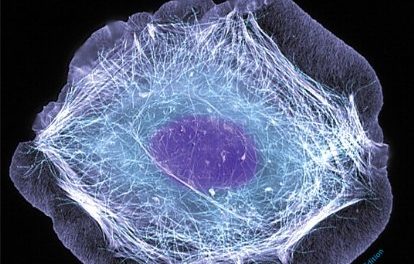 Editor: James W. Patterson, MD. Pattern Recognition Series editors: Kevin O. Leslie, MD and Mark R. Wick, MD.
Editor: James W. Patterson, MD. Pattern Recognition Series editors: Kevin O. Leslie, MD and Mark R. Wick, MD.
Publisher: Elsevier Saunders – 740 pages
Book Review by: Nano Khilnani
This large (11” x 9”) book enables you the student, resident or practitioner in skin pathology to identify different skin conditions, ranging from simple scratches to tumors.
Tumors, defined simply, are abnormal benign or malignant new growths of tissue that possesses no physiological function and arise from uncontrolled (usually rapid) cellular proliferation. Neoplasia – the process of tumor formation – is a term you will encounter frequently in this text.
This book is a volume in the Pattern Recognition Series. The pattern-based approach to diagnosis of disease, disorder, or abnormality used in this book has identified eight different patterns of skin disease. The 28 chapters contained in this volume are classified according to each pattern which is identified by its own distinct color. The chapters are color coded according to the following eight classifications, with a summary found on three pages from xvii to xix.
- Nearly normal skin including polypoid or pedunculated skin
- Epidermocentric change
- Adnexocentric change
- Cystic change
- Bullous and pustular dermosis
- Dermocentric change (noninflammatory, or with minor inflammatory component)
- Dermocentric change (inflammatory or neoplastic with relationship to, or derivation from inflammatory elements
- Panniculocentric change
On these pages you will find boxes of different colors with the pattern on the left side and a list of the various diseases on the right. It is an easier way to diagnose and learn about characteristics of particular diseases when you classify them through this pattern-based approach.
Following these three pages with simple lists of diseases in each pattern, you will find on 18 more pages – from xx to xxxvii – detailed descriptions of each pattern of disease in the form of “elements of the pattern” on the left pages. And on the right pages, you will find diseases listed from top to bottom. And from left to right, you will find “additional findings,” “diagnostic considerations” and “chapter-page number.”
This systematic color-coded presentation of information is very helpful to effective learning, considering that there are many types of skin diseases and numerous variations in each type.
This book is deigned to benefit you in several important ways. Through it you will be able to:
- Identify challenging types of skin cancer, including cutaneous lymphomas and melanocytic lesions, as well as non-neoplastic diseases such as panniculitis; drug eruptions, including reactions to newer chemotherapeutic agents; infectious diseases; and many more, with the only dermatopathology reference that uses a pattern recognition approach.
- Progress logically from the histologic .pattern, through the appropriate workup, around the pitfalls, to the best diagnosis.
- Compare your clinical findings to more than 1,400 full-color, high quality photos that capture the characteristic presentation of a full range of dermatopathology patterns.
- Access the fully searchable text and downloadable images online at: www.expertconsult.com
The coverage of this book is extensive. Its 28 chapters provide information on eight different patterns of skin ailments, as mentioned above. Five of them are based on anatomic location, and the other three are histological abnormalities: nearly normal skin, cystic change, and bullous / pustular dermatosis.
Providing hundreds of images, the reader is able to clearly see distinct differences between one disease and another as well as variations among diseases within a category.
Topics are listed at the beginning of each chapter followed by elucidations on each topic, aided by numerous illustrations that help you understand the material.
Due to the efforts of Dr. Patterson and contributors named below, this is an outstanding, extensive, and well-organized book on skin pathology made more valuable with its thorough use of the pattern-recognition diagnostic approach.
James W. Patterson, MD is Professor of Pathology and Dermatology, and Director of Dermatopathology at the University of Virginia Health System in Charlottesville, Virginia.
Contributors:
Smitha S.Kuppalli, MD is Chief Resident in the Department of Dermatology at the University of Virginia School of Medicine in Charlottesville, Virginia.
Michael Marchetti, MD is Chief Resident in the Department of Dermatology at the University of Virginia School of Medicine in Charlottesville, Virginia.
Mark R. Wick, MD is Professor of Pathology in the Division of Surgical Pathology at the University of Virginia Medical Center in Charlottesville, Virginia.






